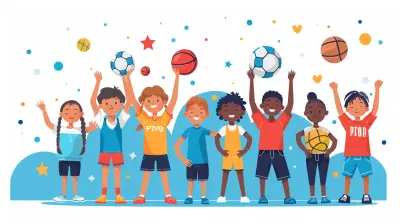How Standardized Testing Impacts Public Education Outcomes
30 July 2025
Standardized testing — just hearing those two words can bring back memories of scantron sheets, #2 pencils, and an overwhelming sense of pressure. But love it or hate it, standardized testing has been a fixture in public education for decades. From evaluating student performance to influencing school funding, these tests have a massive impact on the way schools operate and how students learn.
But what exactly are the consequences of standardized testing? And how much does it actually shape the outcome of education in public schools? Let’s break it down, real talk style.
What is Standardized Testing, Anyway?
At its core, standardized testing refers to any form of test that is administered and scored in a consistent (or "standard") way. Everyone gets the same questions, the same instructions, and usually the same time limits.These tests can cover anything from basic math and reading skills to science and history knowledge. Common examples in the U.S. include the SAT, ACT, and state assessments like the STAAR in Texas or the MCAS in Massachusetts.
Sounds simple enough, right? But the real story lies in how these tests affect students, teachers, schools, and the very fabric of public education.
The Purpose Behind Standardized Testing
Before we start pointing fingers, let’s understand the original intent. Standardized tests were designed to:- Measure student learning objectively
- Evaluate school performance
- Hold educators accountable
- Spot achievement gaps
- Support data-driven decision-making
In theory, this all sounds great. A fair and equal way to see how students across the board are doing? Who wouldn’t want that? But the devil, as they say, is in the details.
The High Stakes of High Scores
One of the biggest shifts in public education over the last few decades is the rising importance of test scores. Schools, teachers, and even students themselves are increasingly evaluated based on how well they perform on these standardized tests.1. School Funding Tied to Test Performance
Let’s start with a harsh truth: in many areas, school funding is linked directly to standardized test scores. That means schools with better scores get more money, while struggling ones fall further behind.It’s like telling a runner with a broken leg to keep up or lose their shoes. Does that seem fair?
2. Teacher Evaluations Based on Student Scores
Think about this: You’re a teacher, and your future salary or even your job depends on how well your students perform on a single test. That can completely change how you approach your job.Teachers often feel pressure to "teach to the test," sacrificing creativity, engagement, and deep learning along the way. Instead of creating lifelong learners, the system starts churning out good test takers.
3. Student Stress and Anxiety
Let’s not forget the kids. The pressure to perform well has trickled down, and now students often feel intense anxiety over these exams. A single number can feel like it determines their worth, their future, and their standing among peers.Not exactly the best environment for learning, is it?
Standardized Tests and Educational Equity
One of the original goals of standardized testing was to level the playing field. Everyone takes the same test, so it seems like everyone gets an equal shot. But does it really work that way?1. Inequities in Test Preparation
Here’s the thing — not all kids have the same access to resources. Wealthier families can afford tutors, prep books, and enrichment programs. Kids in lower-income areas? Not always.That means the tests may be standardized, but the preparation sure isn’t. So scores often reflect opportunity more than ability.
2. Language and Cultural Barriers
For English Language Learners or students from diverse cultural backgrounds, many test questions just don’t make sense. If a student is still learning the language, how can they possibly show what they know in math or science?The result? A system that unintentionally leaves some students behind — all in the name of equality.
The Curriculum Gets Narrower
Standardized tests mostly focus on reading, writing, and math. So guess which subjects get prioritized?You guessed it — schools often slash time for art, music, social studies, and even physical education to make more room for test prep. In some schools, these other subjects almost disappear.
We end up churning out students who can analyze a poem but have no idea how government works, can calculate the area of a triangle but haven’t exercised in weeks. Is that the well-rounded education we’re aiming for?
Are We Measuring the Right Things?
Here’s a big, burning question: do standardized tests actually measure what matters?1. Missing Critical Skills
These tests are great at measuring memorization and certain types of problem-solving, but they miss out on:- Creativity
- Collaboration
- Critical thinking
- Emotional intelligence
- Practical application
We’re in the 21st century, folks. Shouldn’t our assessments reflect the skills students need in real life?
2. One Size Fits All? Not Exactly
Every kid learns differently. Some are visual learners, some are auditory, some thrive in conversations. Standardized tests don’t account for that.Trying to measure all students with the same ruler is like trying to measure every sport with a stopwatch. Sure, it works for track. But what about wrestling or artistic gymnastics?
The Good Side of Standardized Testing
Okay, we’ve been pretty hard on standardized testing so far. But let’s be fair. There are some positives worth talking about.1. Provides Useful Data
When used correctly, test data can shine a light on what’s working and what’s not. If a whole grade struggles with geometry, maybe it’s time to look at how it’s being taught.2. Helps Identify Underperforming Schools
Standardized tests can highlight schools or districts where students consistently lag behind. That’s useful information that can drive support, funding, or intervention.3. A Tool for College Admissions
Many colleges (especially in the U.S.) still use standardized tests like the SAT or ACT as part of admissions. It gives students from underrepresented schools a way to stand out — assuming they have access to prep resources.The Push for Reform
Here’s the good news: the conversation around standardized testing is changing. Educators, policymakers, and parents are pushing back, and alternatives are being considered.1. Performance-Based Assessments
These focus on projects, presentations, and portfolios that allow students to demonstrate their knowledge in more meaningful ways. It’s like replacing a one-hit-wonder with an entire album.2. Flexible Testing Models
Some states are experimenting with adaptive testing, which adjusts the difficulty of questions based on student performance in real time. It’s more personalized and gives a clearer picture of what a student knows.3. Reducing Test Emphasis
Many schools are starting to reduce the weight of standardized tests in overall evaluation. Some colleges have even adopted test-optional policies. The tide is slowly turning.So, Where Do We Go From Here?
The impact of standardized testing on public education is undeniable. It shapes curriculum, affects funding, and influences how we define student success.But we’ve got to ask ourselves: Are we using it too much? Are we using it the right way?
If we want a generation of critical thinkers, innovators, and lifelong learners, then we need assessments that reflect those values. Standardized tests can be one piece of the puzzle — but they shouldn’t be the whole picture.
Final Thoughts
Standardized testing isn't inherently evil. It's a tool — but like any tool, it can be misused. When we rely too heavily on it, we start to lose sight of what really matters in education: inspiring a love for learning, nurturing creativity, and helping every student reach their full potential.So, the next time someone starts talking scores and rankings, remember: numbers can help, but they don’t tell the whole story.
Let’s keep pushing for an education system that values depth over data points, and growth over grades.
all images in this post were generated using AI tools
Category:
Education PolicyAuthor:

Monica O`Neal
Discussion
rate this article
1 comments
Alisha McNeal
Standardized testing: the ultimate game of educational musical chairs! 🎶 While it may shake things up, let’s not forget that learning is a dance best enjoyed with creativity and joy!
August 4, 2025 at 2:46 AM

Monica O`Neal
Thank you for your insightful comment! You’re absolutely right—while standardized testing plays a role in education, we must prioritize creativity and joy in learning to truly enrich the educational experience.


